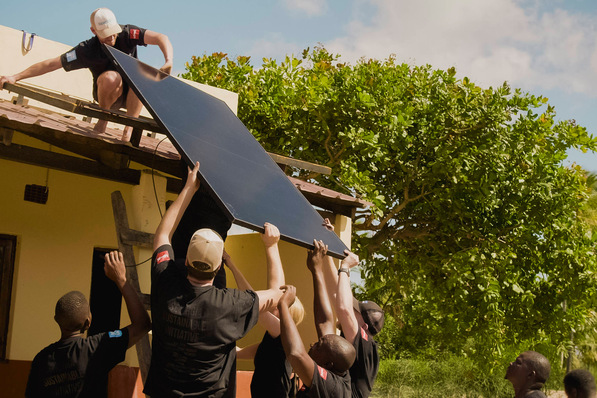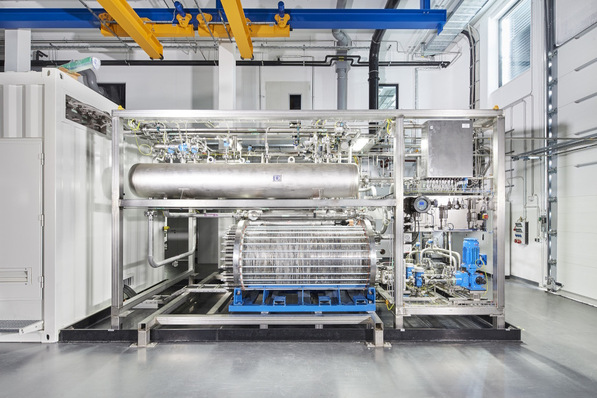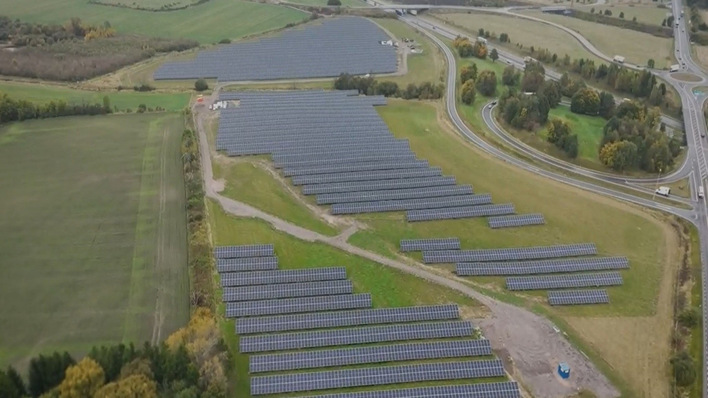The technical service provider Faber Infrastructure and electrical wholesaler YESSS have been using mobile solar power stations as a power source in Bad Neuenahr, which was particularly affected by the flood disaster. The autonomous plants have already helped to save 3,400 litres of diesel fuel since their installation. With their voluntary project, the companies want to ring in a paradigmatic change and prove that a secure initial power supply from renewable energies is possible in disaster events.
Bad Neuenahr-Ahrweiler 21/12/2021. The power plant of technical service providers Faber Infrastructure and YESSS Elektro illuminates St. Pius Church and supplies two construction planning office containers with environment-friendly solar power. This is where the consulting engineers of the Ahr Valley Cooperation prepare their damage surveys for the residents affected by the flood disaster in Rhineland-Palatinate's Ahr Valley – strictly on a cost-covering basis and not for profit.
See also: Economic losses from weather extremes amplify each other
The turnkey plants function on a plug-and-play basis and consist of a mobile container featuring 64 swing-out solar modules with inbuilt lithium ion storage. In addition to which the partners also installed an innovative container top unit with integrated solar modules on the office containers' roof. The system supplies around 27 kilowatts altogether, and is able to store up to 80 kilowatt hours of solar energy for later. If that should not suffice, the integrated 24/7 backup system will step in as required. Since its installation in September this year, the autonomous power station has already saved 3,400 litres of diesel fuel.
Solar power instead of diesel

Faber Infrastructure / YESSS Elektrofachgrosshandlung
"Especially now in winter, the power demand is higher than ever – for example to dry out the buildings, build the infrastructure, and for the street lighting", explains Sven Leinardi, Mobile Storage Project Manager at Faber Infrastructure GmbH. "Vast quantities of diesel" are currently delivered to the affected areas, he adds, with generators being refilled by tanker lorries once a week, and a diesel generator humming every 150 metres in the Ahr Valley.
Maintaining and refuelling these generators ties up the resources of helpers and NGOs. Because the generators are running day and night, the noise pollution for the residents is correspondingly high. "We are delighted to be able to offer an environment-friendly, quiet and resource-saving alternative with our project", says Leinardi.
Also interesting: Nuclear power plants threatened by flooding
Christian Heinemann, Head of Supporting Departments at YESSS Elektro, adds: "This project is an excellent example for the use of renewable energies in areas with damaged or destroyed infrastructure. The Ahr Valley could become a model region for renewable energies. We want to ring in a turnaround with our project, and prove solar power's outstanding usability for reliable initial supplies in disaster events."
About the flood disaster
In mid-July of 2021, the greater Eifel / East Belgium / Rhineland area suffered a flood disaster that submerged and destroyed countless roads, bridges, railway lines, supply lines and buildings as well as costing many lives.
Initial estimates set the physical damage at over 50 billion euros. The reconstruction in towns like Gemünd or Bad Münstereifel will take two years as a minimum, with a far longer time expected for the Ahr Valley itself. (mfo)

Faber Infrastructure / YESSS Elektrofachgrosshandlung







